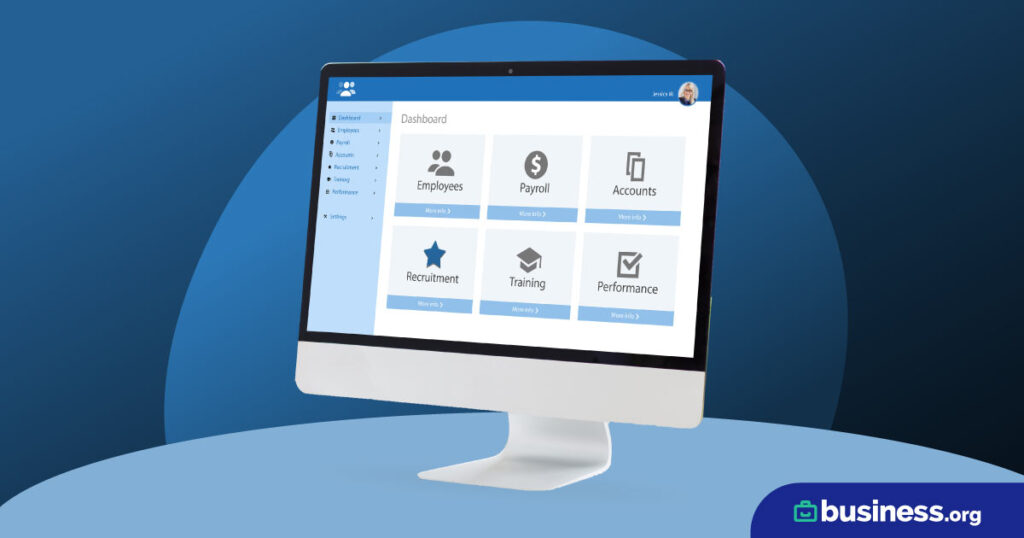We are committed to sharing unbiased reviews. Some of the links on our site are from our partners who compensate us. Read our editorial guidelines and advertising disclosure.
Understanding the Basics of Business Loan Rates
Finding funding can be daunting for small-business owners. Not only do you have to choose the right business loan, but you also have to consider financial risk. Plus, there are many small-business loan options to explore, like term loans, invoice factoring, equipment financing, and business lines of credit—to name a few. With varying interest rates, it’s important to understand your loan terms and how interest plays into them. Those pesky rates are the great catch-22 of the money business: it costs money to get money.
So how do you know if you’re getting the best business loan interest rates? We’ll explain what to look for.
What we'll cover
Most common types of loan interest rates
Let’s dive into the most common types of interest rates that could apply to your loan.
Fixed rate
Just as it sounds, these rates are fixed over the lifetime of the loan. That means you don’t have to worry about your loan officer changing your interest rate after your agreed-upon terms. This helps you know up front exactly the amount of interest you’ll owe on a loan.
Variable rate
These rates change according to a prime interest rate (like the United States Prime Rate). Your loan will change according to your loan terms (every year, every six months, etc.). This can be a great option if you get a good rate on a short-term loan, but it can pose great risks. If the prime rate skyrockets, say hello to much higher interest rates.
Annual percentage rate (APR)
Your APR includes not only interest rates but also all of the fees you’ll have to pay on a loan (like origination fees, closing fees, etc.). Lenders will calculate APR based on things like the loan type, total amount of the loan, your interest rate, your repayment terms, and fees associated with the loan. It’s meant to offer you a more comprehensive view of the cost of your loan. However, the actual amount you pay on a loan per month is based on your interest rate and not on your APR (remember, APR includes all fees that have varying deadlines).
APRs can be a useful tool for comparing loans. However, they can also be a bit misleading, especially for shorter-term loans, because your fees will be higher when you have to pay the loan back quickly. Plus, some loans have a prepayment penalty, which is a fee for paying off your loan earlier than the term agreement. Be sure you understand all of the terms of your loan when deciding if it’s a good option.
How APR and interest rates are determined
Lenders use a prime rate (remember that United States Prime Rate?) along with factors about you or your business when calculating an APR, so APRs widely differ between borrowers. Your loan officer should detail your APR, but you can also calculate it with a helpful online calculator. When calculating your APR and interest rates, lenders consider things like credit scores, credit history, debt-to-income ratio, your business profits (which may be based on tax returns), and the type of loan.
By signing up I agree to the Terms of Use.
Most common loan types
While this list is certainly not exhaustive, these are some of the most common small-business loans, and we’ll cover what they’ll cost you (no sugarcoating here).
SBA loans
These loans backed by the U.S. Small Business Administration (SBA) have the most competitive rates for an alternative small-business loan. In fact, their rates max out at 11.5% for loans under $50,000 and at 9.5% for loans over $50,000. You can also get a Community Development Corporation (CDC) loan through the program.
But SBA loans are hard to qualify for. You must be in business for at least two years with no less than $100,000 in revenue over the past 12 months and a minimum credit score of 680. Plus, you must use up all of your financing options before getting the loan. But wow, are those interest rates great. It’s worth the hassle if you can swing it.
Business credit cards
Securing a business credit card can be a great option to boost your working capital because you only pay on your APR when you don’t pay your full balance. And you can determine how much you borrow up to your credit limit. If you get a credit card with a grace period with 0% APR, you could borrow money without paying any interest according to the terms of your contract—a very attractive option for a borrower. But be responsible. Credit cards often come with high APRs after the initial grace period, and they often have additional APR charges for things like late payments.
Term loans
Term loans are most likely what comes to mind when you think about a loan. You borrow a set amount of money for a fixed amount of time (loan term) and pay the money back in monthly installments with the agreed-upon interest rates. But the attractiveness of your rate largely depends on you: great credit, time in business, cash flow, and debt-to-income ratio (among other things) play a huge part in your interest rate. Do what you can to become an ideal borrower. It’ll pay off.
Equipment financing
If you find yourself needing to buy equipment, equipment financing can be a great loan option. Your interest rates will depend on things like your down payment, your business finances, and your credit score. Note that these interest rates can be lower than average, especially with valuable equipment, because the equipment itself is collateral on the loan.
Business lines of credit
Similar to credit cards, lines of credit offer a revolving credit option for businesses. They often have high APRs, but the APRs can be misleading because the loan terms are often very short (like three to six months), so the fees look higher than average. They often do have high fees, but it’s good to consider the interest rate and overall costs before discounting the lines of credit solely based on APR.
Microloans
These are basically the mini-me of term loans. Microloan lenders consider the same types of factors when determining if you’ll qualify—credit score, debt-to-income ratio, time in business, etc.—and the interest rate will reflect those factors. However, like business lines of credit, APRs can be a bit misleading when comparing these loans to longer-term loans, so be sure to consider the lifetime cost of the loan when making a decision about which loan to get.
Merchant cash advances (MCAs)
With an infamous reputation, merchant cash advances can feel like get-rich-quick schemes that lead you to losing a lot of cash. They offer a quick lump sum and then charge a fixed percentage of your daily revenue as payment. And since daily revenue can fluctuate, it can put you in a bind if you’re unable to repay the loan.
For example, if your sales dip, it will take you longer than expected to pay off the amount you borrowed—perhaps even longer than the term you originally agreed to, which could cost you in extra fees. And MCAs have extremely high APRs and aren’t actually considered loans, so they won’t build your credit. Whenever possible, consider other loan types that have better interest rates or build your credit so you become a more attractive borrower.
Commercial real estate loans
If you’re looking to take out any commercial real estate loans, you can get them with lower interest rates (although they can be higher than a regular mortgage). However, they are long-term, and they often have a prepayment penalty. Since it’s a long-term investment, it’s best to make sure you’re applying with the best possible credit, so take some time to build your credit if needed. And also make sure the real estate is something you’re confident about investing in. You don’t want to get stuck with having to remodel your town’s last surviving Blockbuster (unless you’re in Bend, OR, that is).
The best brands with the lowest overall rates
If you can’t get a loan through a traditional bank or you need cash fast, an online lender can be a good option. Not sure which online lenders will work for you? We’ve got a handful of suggestions for you.
Top 5 brands with the lowest APRs
- : Best for bad credit
- : Best for startup business
- : Best for larger loan needs
- : Best for established businesses
- : Best for microloans
Comparing business loan APRs
Data effective 6/30/22. At publishing time, pricing and features are current but are subject to change. Offers may not be available in all areas.
Kabbage—Best for bad credit
Fast, convenient, and flexible, Kabbage is a friend to businesses with bad credit who need a revolving line of credit. And its business requirements are fairly lenient—it requires one year in business and at least $50,000 in yearly revenue or $4,200 of monthly revenue over the last three months. It doesn’t have origination fees or prepayment penalties to influence an APR, but its rates can be pretty high, especially at the outset of the loan. So keep that in mind when calculating the cost.
Fundbox—Best for startup businesses
When you secure a loan with Fundbox, expect to pay weekly payments of the same amount plus a flat fee. The good news is there are no prepayment penalties and the remaining fees are waived if you pay back early. Fundbox just requires a business checking account, at least $50,000 in revenue, and three months of account history from your business bank account or two months of records from a qualifying accounting software. Like Kabbage, the APRs can be higher, but the loan terms are shorter, so evaluate the entire cost of the loan when considering if it’s a good choice for you.
Bluevine—Best for larger loan needs
Offering from $5,000 to $5 million in loan options, Bluevine can secure a lot of much-needed cash flow for your business. Its bread and butter is invoice factoring and lines of credit, so those unpaid invoices from other businesses can be put to use with Bluevine. Invoice factoring is a strong option for B2B (business-to-business) businesses; it considers business cash flow and the strength of your customers over personal and business credit history, so it can also be a nice option for people with poor credit.
FundingCircle—Best for established businesses
Modeled after SBA loans, Funding Circle loans are a great option for established businesses (in this case, at least two years in business) looking to grow. It’s technically a peer-to-peer lending platform, so it will connect you with private lenders. It offers loan terms for as little as six months and as long as five years and can get you competitive interest rates, but you’ll need good credit to qualify. You’ll also have to pay an origination fee, which will influence your APR.
Prosper—Best for microloans
If you’ve got average and above-average personal credit and aren’t concerned with building your business credit, then Prosper is a great option for you. It offers microloans ranging between $2,000 and $40,000, and the loan and interest rate is based on your personal credit score and has nothing to do with your business—because it’s really a personal loan. If you’re okay with putting company funds in your name, it’s definitely something to consider.
The takeaway
Alternative lending options can get you the cash you need to take your business to the next level. But it doesn’t come without cost. Interest rates and loan fees can make a huge difference in managing your cash flow. But if you know what to look for and are smart about payments, you can find financing to help your business grow without sacrificing a ton of financial health.
Disclaimer
At Business.org, our research is meant to offer general product and service recommendations. We don't guarantee that our suggestions will work best for each individual or business, so consider your unique needs when choosing products and services.



